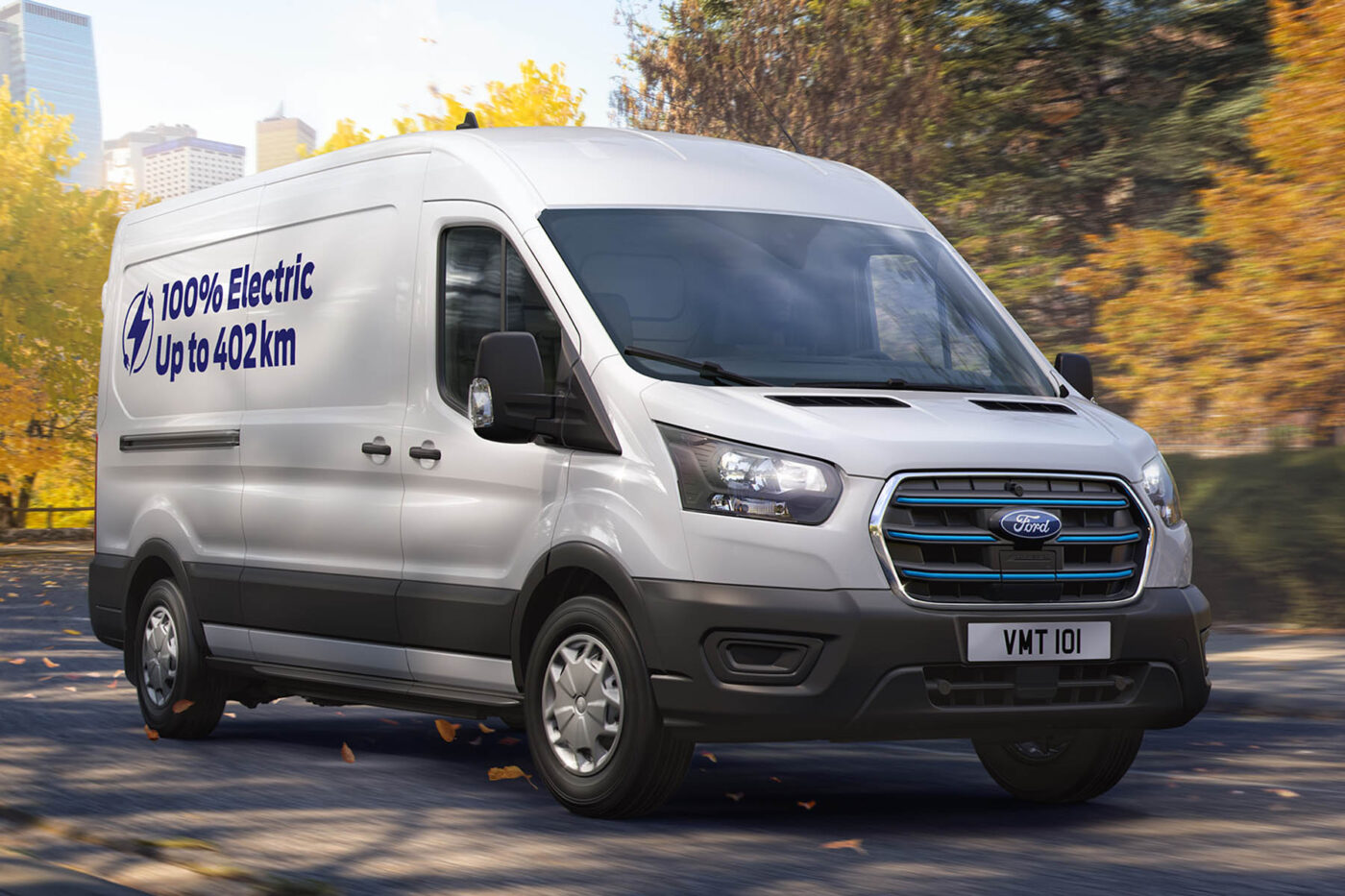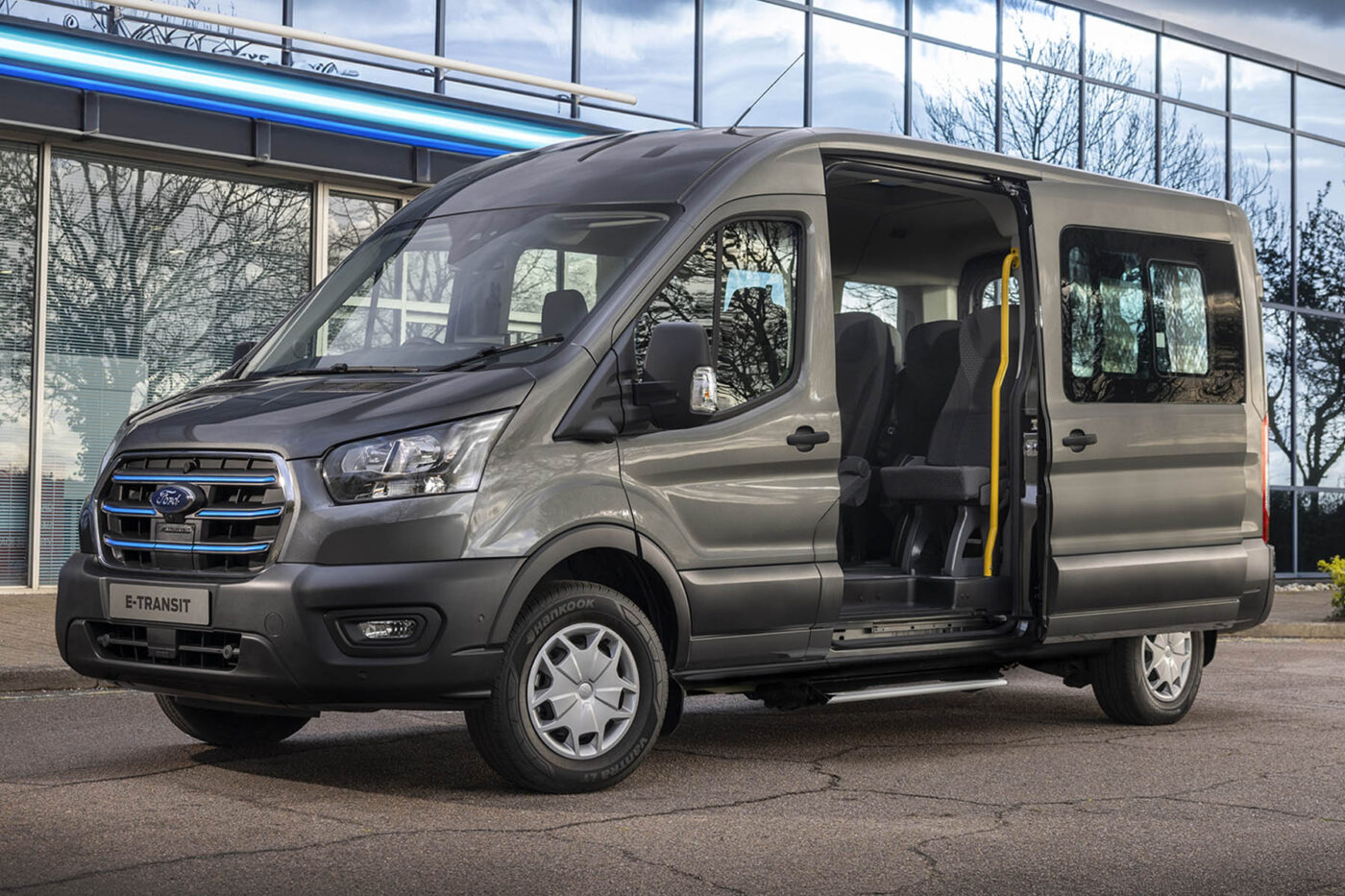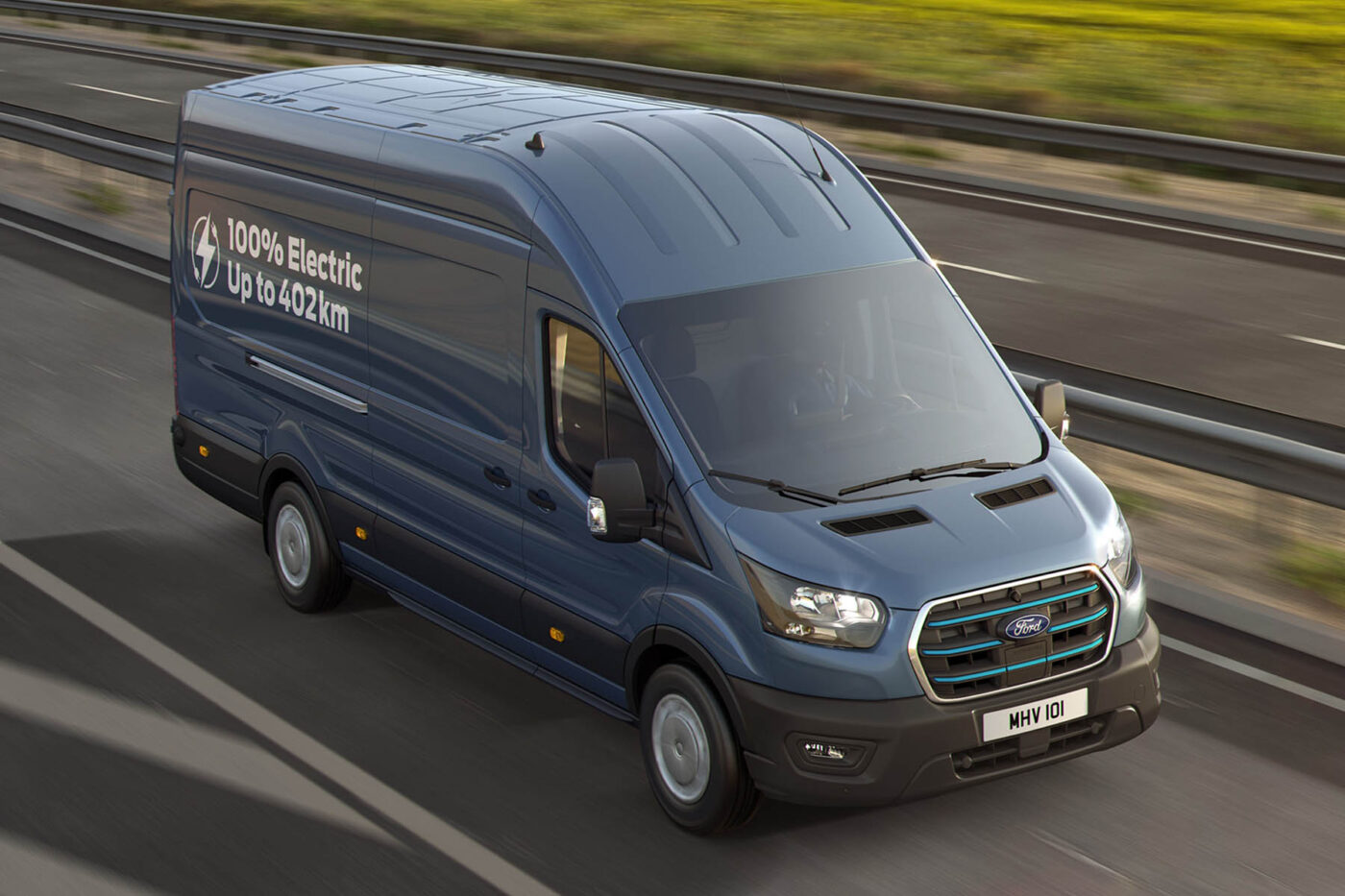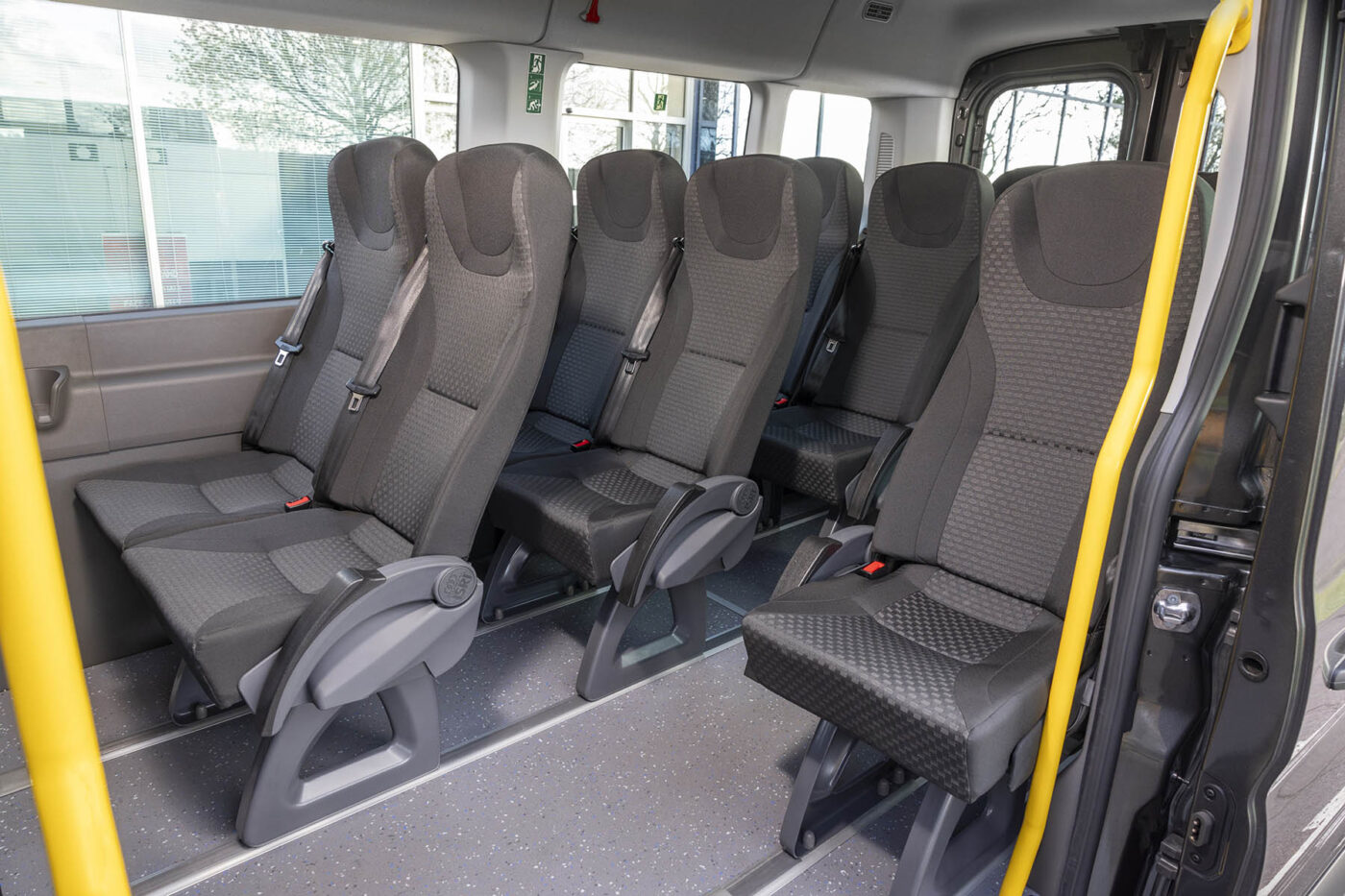Ford gives E-Transit larger battery for 400 kilometres range
The electric version of the Transit has been marketed in Europe since 2022 and rolls off the production line at Ford Otosan, the Turkish joint venture between Koc Holding and the Ford Motor Company. The van competes in the two-tonne class and currently has a WLTP range of 316 kilometres. That was a decent figure at market launch. Still, the competition is now in the process of launching vans with a range of 400 kilometres and more: The Renault Master E-Tech announced for this spring has a range of 410 kilometres, the new Mercedes eSprinter, which has been available to order since the beginning of the year, has a range of 400 kilometres and the comparable Stellantis models have a range of 420 kilometres.
Ford boasts that the E-Transit will have almost five times as many customers in Europe in 2023 as the next best competitor. Market share: a good 55 per cent. To maintain its pole position, the manufacturer wants to catch up in terms of range with the E-Transit, albeit somewhat later than the aforementioned competitors. The new vehicle variant was announced in the US back in March. It is “a new model option for the global markets”, according to a Ford Pro press release published today. The version with a 68 kWh battery for 316 kilometres will remain available.
DC charging power climbs from 115 to 180 kW
Let’s look at the datasheet: the “extended range” version will house a larger battery with 89 kWh of usable capacity, which should lead to a 28 per cent increase in range to 402 kilometres, according to WLTP. According to Ford, a heat pump with vapour injection, which will be fitted as standard in the smaller one-tonne Ford E-Transit Custom van, will also contribute to the longer range.
Ford has also worked on the charging capabilities of the electric Transit: The version with an 89-kWh battery can charge 22 kW instead of 11 kW AC, reducing the charging process to fully charge the battery to six hours. At the same time, Ford is improving the DC fast-charging capacity from the current 115 to 180 kW so that a charging process from 10 to 80 per cent battery charge level will soon only take around 28 minutes.




What is essential for commercial customers is what the innovation means for model selection, payload and towing capacity. According to Ford Pro, the extended range E-Transit will be launched on the market in 19 model variants, “including L3 and L4 lengths, van, double-cab-in-van and single chassis cab body styles, with GVMs from 3,500 kg to 4,250 kg,” the company explains. Ford puts the maximum payload of the panel vans at up to 1,460 kilograms and that of the chassis at up to 1,814 kilograms. That is roughly on par with the E-Transit launched in 2022 (1,600 kg). Incidentally, Ford does not specify the maximum load compartment volume of the new variant, which is currently 15.1 cubic metres, while the towing capacity remains identical at up to 750 kilograms. As an option, the electric “extended range” Transit offers a V2L connection with 2.3 kW to supply external devices.
There are no changes to the motorisation of the E-Transit. The model continues to offer a choice of 135 or 198 kW. Ford has not yet commented on the prices of the longer-range E-Transit. Current versions are available from 59,890 euros in Germany. The new entry-level price announced for the US in March is only slightly higher than the current base price (51,095 compared to 49,995 dollars), fuelling hopes that there will be no significant price jump in Europe either.
Ford hopes to attract new customer segments
Ford assumes that the new Ford E-Transit’s extended “significantly broadens the potential customer base”. “The extended range option for E-Transit is another example of the Ford Pro commitment to making high-productivity electric fleets a reality across Europe,” says Hans Schep, general manager, Ford Pro, Europe. “Giving customers the option to drive further between charges alongside a wide choice of body styles and support from Ford Pro’s connected ecosystem strengthens our position as their trusted partner for complete fleet solutions.”
The new range will be accompanied by the introduction of a new electric minibus, which is based on the 2024 E-Transit and will be “a new factory-supported electric minibus conversion”. It offers seating for up to 15 people (up to three in the front) and is aimed at taxi companies, schools and municipal organisations. Here, too, the 89 kWh battery is available as an option, but it affects the number of seats: As an “extended range” version, the minibus offers space for up to nine passengers in the rear, while the “standard range” version can accommodate up to twelve seats. With the help of its network of more than 200 conversion specialists, Ford states that it is already examining further options “for more specialist conversions, such as wheelchair-accessible transport”.
Turkey as a production hub
Ford Pro is Ford’s business unit for commercial vehicle services, launched in 2021. Ford Otosan builds light commercial vehicles for the European market at the Turkish site in Kocaeli, where the two plants in Gölcük and Yeniköy are located close to each other.
Ford Otosan will build the E-Transit with both battery options at the Gölcük plant. Production of the current electric version has already been running on the same line as the combustion engine and plug-in hybrid versions of the Transit there for some time. “This flexibility will be one of our great strengths,” said Hans Schep during a recent factory tour with media representatives that electrive attended. Although Schep did not break down the drive mix of the Transits that rolled off the production line in Turkey last year, he said about the market share of electric vans in Europe (“around 7 per cent in 2023”) that Ford has set up its capacities in such a way that the foreseeable customer demand can be addressed. “What is certain is that the zero-emission target will apply in Europe by 2035. The question is how the market will develop on the way there. We are currently seeing a downturn in demand for electric vans in Europe. We have to respond to this.”
The plans for the cell plant remain on ice
Ford Otosan can control battery assembly thanks to its own facilities, while the cells for the PHEV and BEV batteries are supplied by LG Energy Solution and SK On from Poland and Hungary, respectively. However, the plans for a Turkish battery cell plant under the direction of LG Energy Solution and Koç for self-supply have been put on ice. The background is a cost-cutting programme adopted by the Ford Group in response to losses running into billions at Ford’s Model e division and weakening demand.
With its vans, Ford is taking a somewhat unconventional approach by offering plug-in hybrids as an alternative to classic combustion and purely electric vehicles. Schep emphasises that “plug-in hybrids are very important as an alternative for our customers”. These also contribute to the EU’s long-term climate targets and enable the integration of electric vehicles in applications that are otherwise difficult to electrify. When asked whether this is a transitional technology, Schep refers to the EU’s decision to phase out combustion engines by 2035, which will inevitably mean that PHEVs will be phased out. Incidentally, the Ford Pro Managing Director for Europe does not see fuel cell drives as another alternative for companies with a large radius in the van sector – in contrast to Renault or Mercedes, which are planning H2 variants of their large vans.
Ford builds VW offshoot of the E-Transit Custom
Incidentally, Ford applies the same strategy (electric and plug-in hybrid vehicles – yes, hydrogen – no) to the smaller Ford Transit Custom. The electric version has been available to order since January. It will also be built in a flexible drive mix on a production line at the Ford Otosan plant in Yeniköy from the summer and delivered from the fourth quarter. Remarkably, preparations are also underway in Yeniköy to build a VW offshoot of the one-tonne vehicle.
It has been known for some time that Volkswagen Commercial Vehicles will launch the next generation of its Transporter in 2024 – based on a platform shared with Ford and, among other things, purely electric. That means the new VW Transporter will no longer be built in Hanover but in Turkey. The cooperation between VW (Commercial Vehicles) and Ford dates back to the time of former Group CEOs Herbert Diess at VW and Jim Hackett at Ford. At that time, the companies concluded their cooperation for the MEB platform for the Ford Explorer and another Ford model from Cologne, as well as a partnership between the divisions for light commercial vehicles. As a result, the VW Amarok pickup adopts the technology from the Ford Ranger (including the plug-in hybrid version), and the VW transporter looks more like the Ford E-Transit Custom.




1 Comment